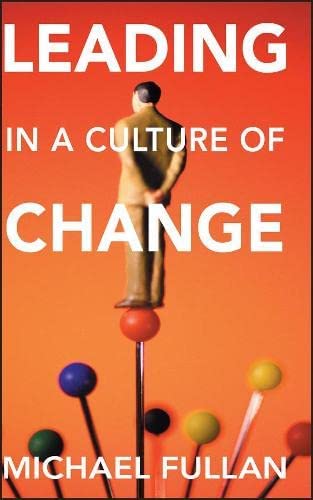Ours is a complex society that leads us to live in a continuous process of rapid, unpredictable and non-linear change. Change is associated with progress, uncertainty and improvement; whether these characteristics are present or not, what is clear is that change is inevitable, occurs everywhere and sometimes generates more tension than anything else. We also know that even conflict is an engine of change. This is where we need leaders capable of understanding and interpreting emerging trends and taking ownership of them to enable what needs to change to change for the purposes of improvement and transformation.
Changing the culture of a school, an organisation, a community or society as a whole is a huge challenge that sparks conflicting emotions between those who are promoting change and those resisting it. Not all leadership styles are equally effective; moreover, consistent change depends more on the attitude of each person carrying it out, the exercise of reflection and timely feedbackthan on designing multiple strategic plans. We are faced with the need for more sophisticated leadership, which entails the dilemma of acting quickly or not acting at all as the environment is changing radically.

We are faced with the need for more sophisticated leadership which entails acting quickly in a radically changing environment
Objectives of “Leading in a Culture of Change”
Michael Fullan sets out two objectives in his book:
- To bring organisations to a point where their capacity to change is concerned with ‘external adaptation and internal integration’, and to do so selectively, that is, with a moral purpose.
- To have organisations proactively challenge the status quo. To achieve this, we have to create leaders capable of effectively interpreting the unwritten score of complex changes.
What good leaders are like
Fullan argues that a good leader is not easy to create, nor do good examples or role models abound. He is also of the opinion that the confidence that some leaders inspire has little to do with the competence they supposedly have. That is why we need leaders who combine humility and courage to solve important problems.
We need leaders who inspire confidence and combine humility and courage to solve problems

This book is a guide to being a good leader of organisational change and transformation. Its author defines the main competences of change with the intention of helping leaders to:
- Apply proven change management methods.
- Develop effective strategies for change leadership.
- Improve the execution of change leadership.
- Understand the concepts of change in organisations and in the real world.
- Learn that change processes can be based on morals and values.
Michael Fullan argues that change leadership must have five core capabilities, and he devotes a chapter in his book to each of them:
- Having a moral purpose, which is the foundation.
- Understanding change, which involves having a new vision.
- Focus on building relationships.
- Building and sharing knowledge, taking into account that technology and innovation are part of “deep learning”.
- Leaders should make coherence and inspire commitment.
Cultivating these competences creates leaders who convey hope, optimism and a never-give-up attitude toward achieving the goals they value. According to Fullan, “Effective leadership means guiding people through the differences and, indeed, enabling differences to surface”. These five aspects are part of three characteristics: enthusiasm, energy and hope. The result of all this, in Fullan’s opinion, is that “more positive things happen than negative things”.

Effective leadership means guiding people through the differences, and as a result enabling differences to surface
How change leaders act
Fullan warns that one must have one’s feet on the ground when understanding the dynamics of change, because ‘moral purpose without an understanding of change will lead to moral martyrdom when passion crashes against the rocks of reality’. Chapter 3 provides nine key insights into how an expert change leader acts:
- Be right at the end of the meeting.
- Relationships come first.
- Recognise the downfall of the implementation.
- Accelerate as you go.
- Beware of ambitious plans.
- Behaviours rather than beliefs.
- Communication during implementation is paramount.
- Excitement prior to implementation is fragile.
- Become a learner-leader.
It goes without saying that leaders have the challenge of overcoming their organisation’s status quo , if that is the case, and helping the people involved to develop a model of change that, according to Fullan, in the school environment involves achieving six global competences: character, citizenship, collaboration, communication, creativity and critical thinking. This learning model has four parts: partnerships, pedagogical practices, learning environment, and digitalisation, along with the support of two other factors: organisational conditions and systems.
Six global competences for change: character, citizenship, collaboration, communication, creativity and critical thinking

When he speaks of “making coherence”, Fullan advocates leadership for change that is contextualising, because “strategic alignment (a rational concept) is not what counts, but coherence (a subjective and emotional phenomenon) does”. Specifically, “effective leaders enable day-to-day consistency”. The five capabilities that Fullan specifies for the development of leadership in a culture of change are necessarily compatible with the exercise of coherence in a context of complexity that generates a commitment based on a moral purpose.
“Generating internal over external commitment is the mark of effective leadership”. To get positive results in this way at schools means that “students are more committed and improve their performance, teachers increase their capacities, families and members of the educational community become more engaged and there is overall satisfaction with and greater pride in the system”. On the other hand, the reduction of the negative aspects results in “fewer damaged efforts at change, less employee demoralisation, fewer examples of piecemeal and uncoordinated reforms, and far fewer wasted efforts and resources”.

Generating internal commitment is the mark of effective leadership. In schools this means greater overall satisfaction for everyone in the system
Promoting new leaders
To lead cultures of change in systems of increasing complexity, ‘good’ leaders are needed, and they are seldom recruited and trained properly, Fullan says.
We are faced with the need for transformational leadership that is less linear but remains focused on the five aforementioned dimensions in order to lead in a culture of change.
The cross-cutting message of this book is that ‘Organizations transform when they can establish mechanisms for learning in the dailiness of organizational life. […] The key point is to develop and foster better leadership cultures.’ Thus, a leader is most effective for the society in which we live when he or she creates leadership in others and encourages them to collaborate with each other.
A leader is most effective for the society in which we live when he or she creates leadership in others and encourages them to collaborate










